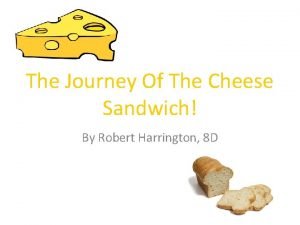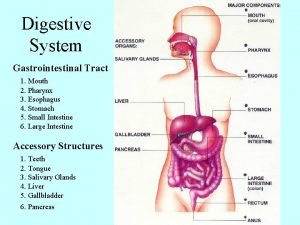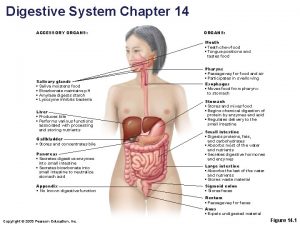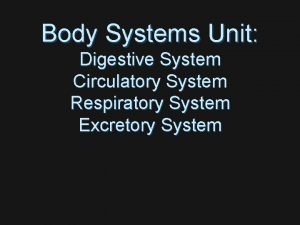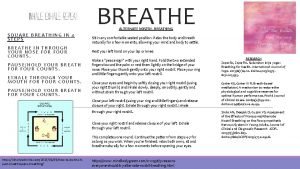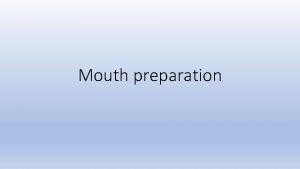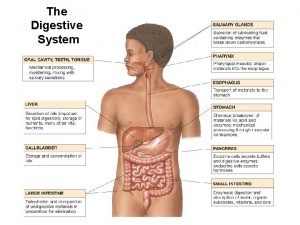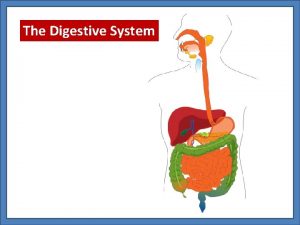JOURNEY THROUGH THE DIGESTIVE SYSTEM Mouth When you















- Slides: 15

JOURNEY THROUGH THE DIGESTIVE SYSTEM

Mouth � � When you put skittles in your mouth the mouth starts chewing it and breaks it down. Using Salivary amylase it can break down sugar into the ions that we need. Mucins helps to hold chewed food together Then the tongue helps to push the food down the Esophagus

Mouth

Esophagus � � � It is the long and narrow tube that connects the Mouth and the stomach When skittles are going down the Esophagus it mixes with saliva and makes bolus Peristalsis in the esophagus moves food from the mouth to the stomach.

Pharynx

Stomach � � Then it proceeds to the stomach where its broken down even more. Skittles are broken down to get the sugar needed from them. Gastric glands within the stomach produce secretions called gastric juice which help the process of breaking down food. The muscular walls of the stomach contract to mix food with gastric juice, producing a mixture called chyme.

Stomach

Pancreas � � � When food reaches the pancreas it uses the exocrine gland to make pancreatic juice. The pancreas also uses the endocrine gland to produce insulin. The pancreas uses a lot of enzymes 2 of which are. Pancreatic amylase digests sugar to maltose. And Lipase digests fats to fatty acids.

pancreas

Liver � � � The liver produces bile which is stored in gallbladder and sent to the duodenum through a duct. Bile breaks fats so they can mix with water and then liver produces enzymes to finish them. So skittles get broken down in bile then liver takes Ammonia produced by the digestion of proteins is converted to a less toxic compound the liver.

Liver

Small intestine � � there are numerous ridges called villi that function to increase the surface area of the intestine. Individual villus cells have microvilli which greatly increase absorptive surface area. So when the skittles pass through the small intestine it uses villus to become bigger. Using Peptidases complete the digestion of peptides to amino acids. And using Maltase completes the digestion of disaccharides.

Small intestine

Large intestine � � � The large intestine also absorbs sodium and other ions but it excretes other metallic ions into the wastes. It absorbs vitamin K produced by colon bacteria. So after all the protein is taken from skittles the metallic waste is then thrown out of the body.

Large intestine
 Cheese mouth
Cheese mouth What are the food groups in a cheese sandwich
What are the food groups in a cheese sandwich What is mouth in digestive system
What is mouth in digestive system Major and accessory organs of the digestive system
Major and accessory organs of the digestive system Function of body in stomach
Function of body in stomach The digestive system you are what you eat worksheet answers
The digestive system you are what you eat worksheet answers Digestive system circulatory system and respiratory system
Digestive system circulatory system and respiratory system Functions of the digestive system
Functions of the digestive system Pathway that food takes through the digestive system
Pathway that food takes through the digestive system Square breathing gif
Square breathing gif Nervous system and digestive system
Nervous system and digestive system What was the effect of cabeza de vaca journey through texas
What was the effect of cabeza de vaca journey through texas Oh be careful little mouth what you say
Oh be careful little mouth what you say Oh be careful little mouth what you say
Oh be careful little mouth what you say Through one man sin entered
Through one man sin entered Tarnow fletcher furcation classification
Tarnow fletcher furcation classification

